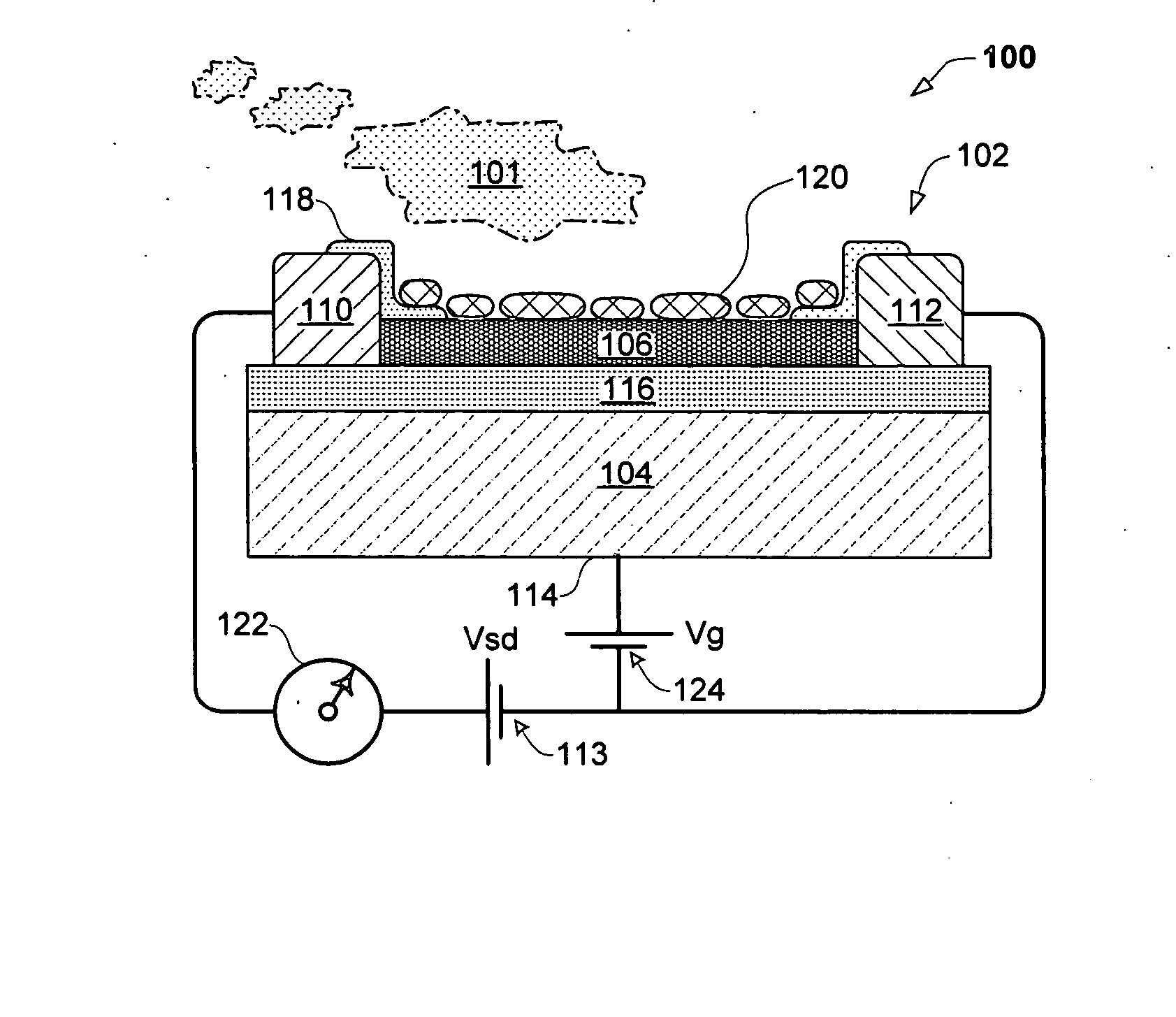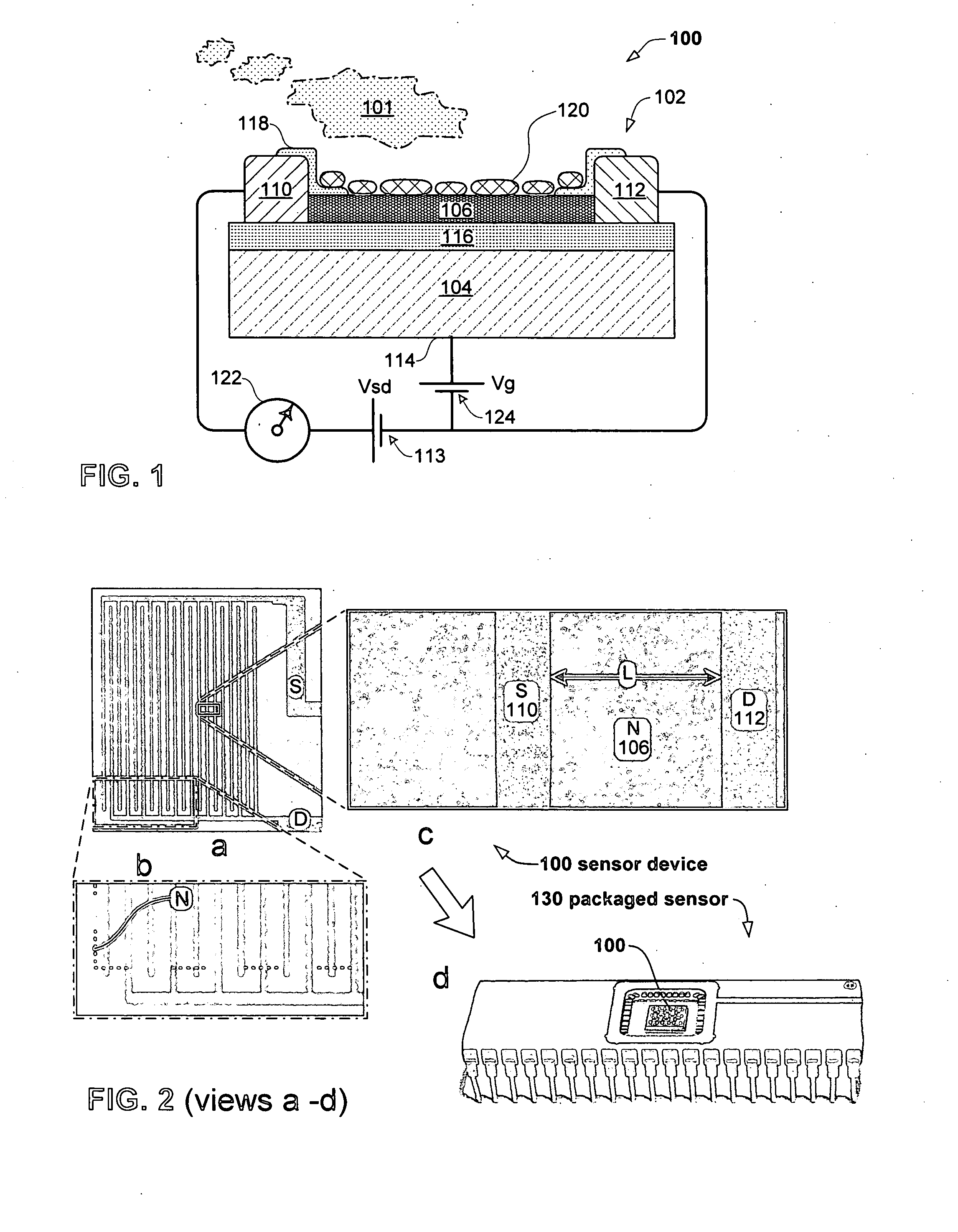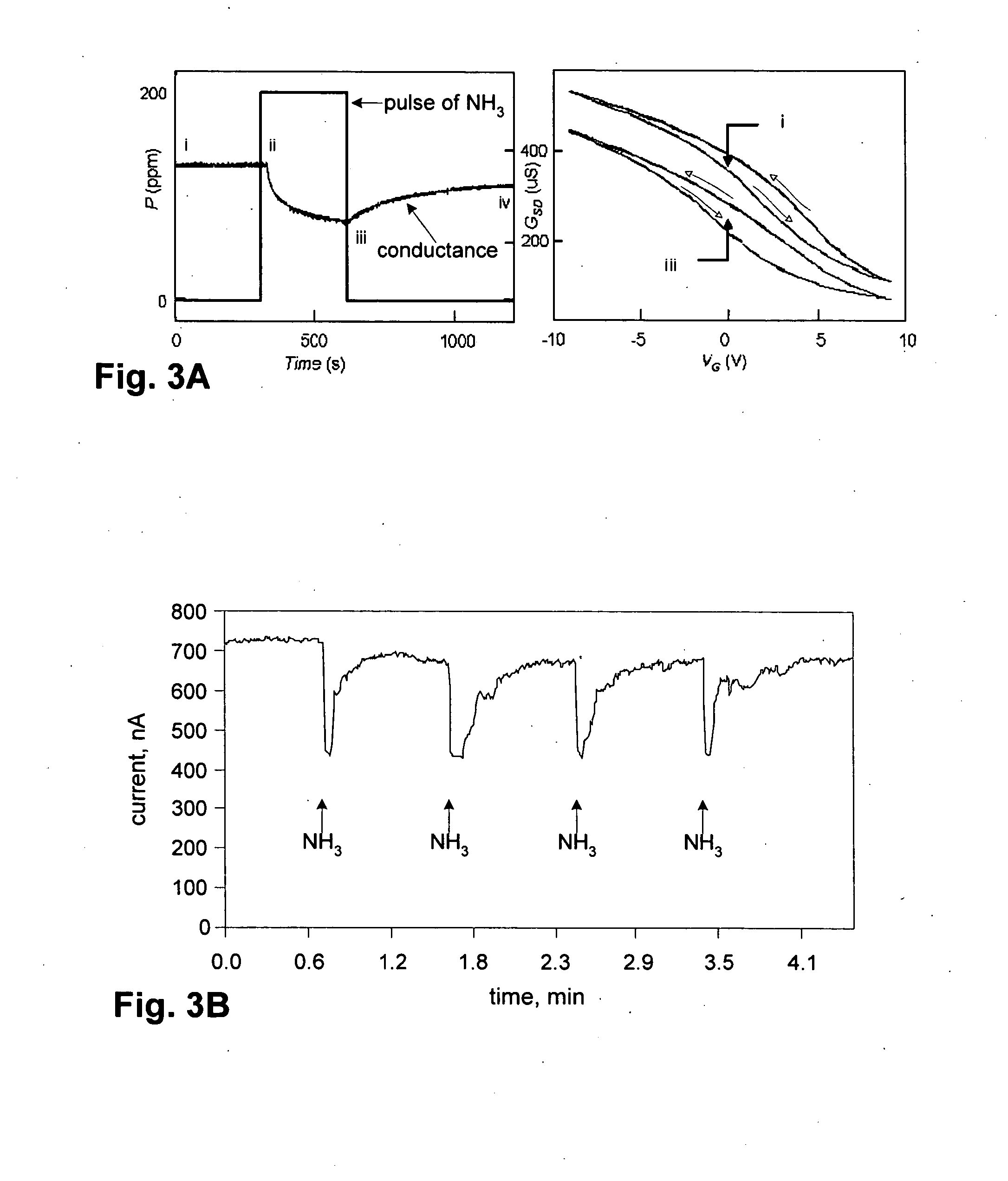Ammonia nanosensors, and environmental control system
a nanosensor and ammonia technology, applied in the field of nanostructured sensor systems, can solve the problems of reduced poultry growth and feed conversion, difficult to avoid ammonia in poultry houses, and known toxic effects of ammonia on humans and animals, etc., and achieve the effect of increasing accuracy and/or sensitivity
- Summary
- Abstract
- Description
- Claims
- Application Information
AI Technical Summary
Benefits of technology
Problems solved by technology
Method used
Image
Examples
Embodiment Construction
A. Exemplary Nanosensor Architecture
[0091]FIG. 1. shows an exemplary electronic sensing device 100 having aspects of the invention, for detecting an analyte 101 (e.g., inorganic species such as NH3, CO2, H2S, NO and the like; organic compounds such as glucose, ethanol and the like; biomolecules such as DNA, globular proteins and the like). A number of alternative sensor device architectures and operating modes are possible, and may be employed alone or in combinations without departing from the spirit of the invention. In the example of FIG. 1, sensing device 100 includes a nanostructure sensor 102 configured for convenient transconductance measurements, as well as other properties. Sensor 102 comprises a substrate 104.
[0092] Sensor 102 comprises a conductive (e.g., semiconductive) nanostructured element configured to include a channel, coating or layer 106 and comprising a nanostructured material (e.g., one or more conducting or semiconducting nanotubes, nanorods, nanowires and / or...
PUM
| Property | Measurement | Unit |
|---|---|---|
| current | aaaaa | aaaaa |
| thick | aaaaa | aaaaa |
| thick | aaaaa | aaaaa |
Abstract
Description
Claims
Application Information
 Login to View More
Login to View More - R&D
- Intellectual Property
- Life Sciences
- Materials
- Tech Scout
- Unparalleled Data Quality
- Higher Quality Content
- 60% Fewer Hallucinations
Browse by: Latest US Patents, China's latest patents, Technical Efficacy Thesaurus, Application Domain, Technology Topic, Popular Technical Reports.
© 2025 PatSnap. All rights reserved.Legal|Privacy policy|Modern Slavery Act Transparency Statement|Sitemap|About US| Contact US: help@patsnap.com



